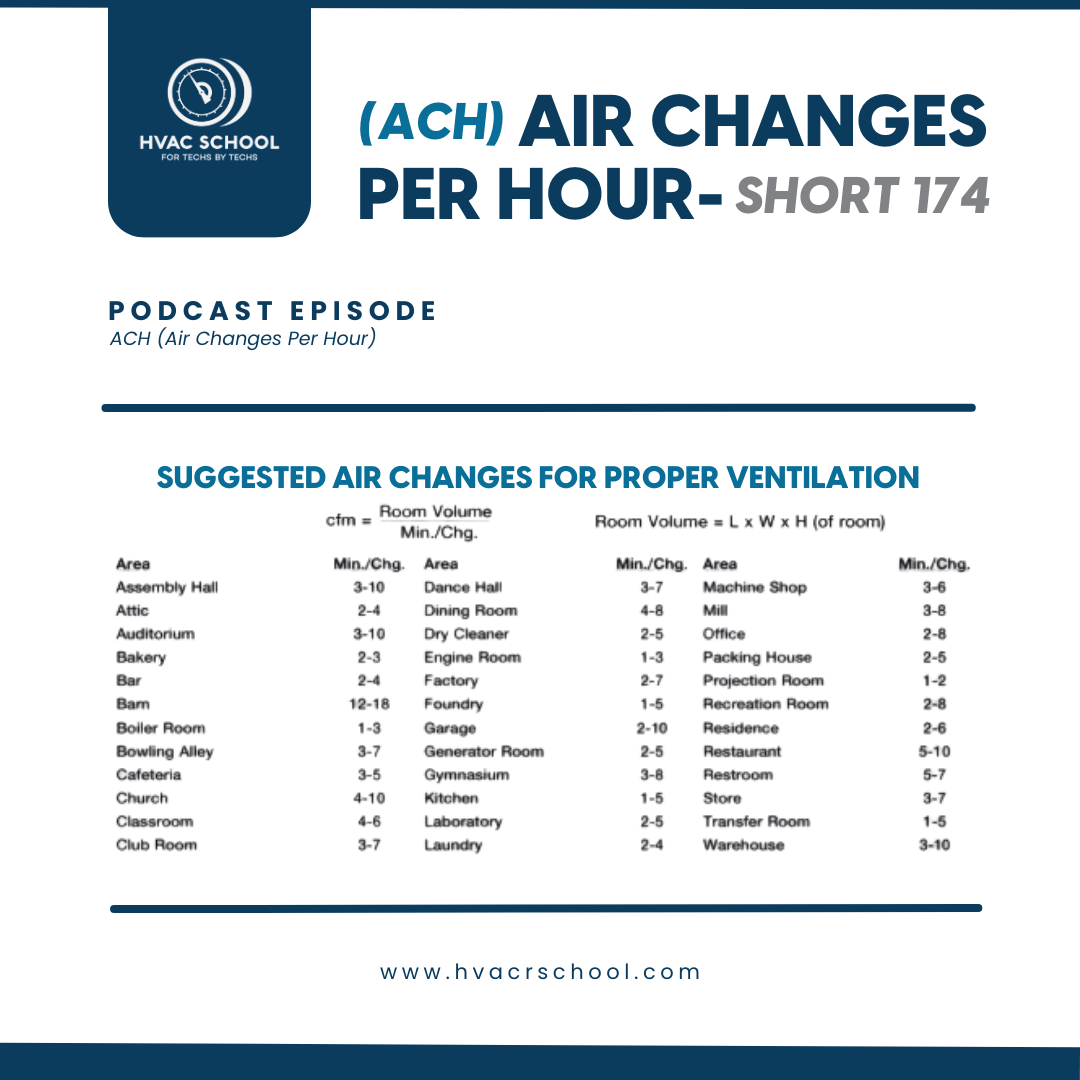ACH (Air Changes Per Hour) – Short #174

In this short podcast, Bryan talks about air changes per hour, also known as ACH, and what it means in HVAC design and indoor air quality (IAQ) discussions.
ACH tells us how frequently the entire volume of air in a room or structure is replaced; we are referring to the cubic feet of air leaving a space and then being replaced within that same space. If we have a balanced number of cubic feet per minute (CFM) of air supplied to and returned from the room in one hour, we would multiply that CFM by 60 to get the ACH, as there are 60 minutes in one hour. ACH should not be used to calculate heat loss and heat gain, even though BTUs are moved with air.
ACH is a practical guideline for HVAC design. Ventilation needs will vary based on the purpose of a room and the number of occupants in it, and ACH tends to be a more important factor for determining how we can meet ventilation needs in commercial and industrial structures than in residential structures, in which we mostly rely on Manual J calculations of sensible and latent BTU gains and losses. However, we should not confuse ACH with outdoor air ventilation requirements as described in ASHRAE Standards 62.1 and 62.2.
ACH also comes into play when it comes to infiltration and the tightness of an entire structure. When used in the context of blower door testing, the ACH will tell us if a building meets tightness standards. There is also a term called ACH50, which refers to air changes per hour at the standard pressure for blower door testing: -50 Pascals. ACH50 does not reflect ACH under natural conditions (ACH natural).
If you have an iPhone, subscribe to the podcast HERE, and if you have an Android phone, subscribe HERE.
Check out our handy calculators HERE.
Author:









Comments
To leave a comment, you need to log in.
Log In